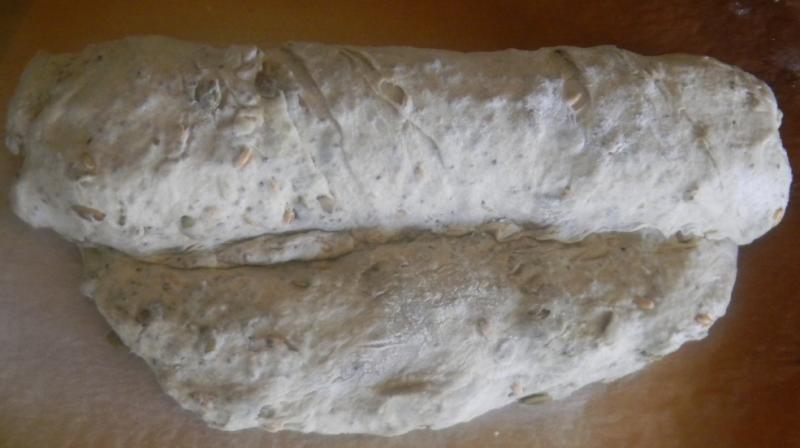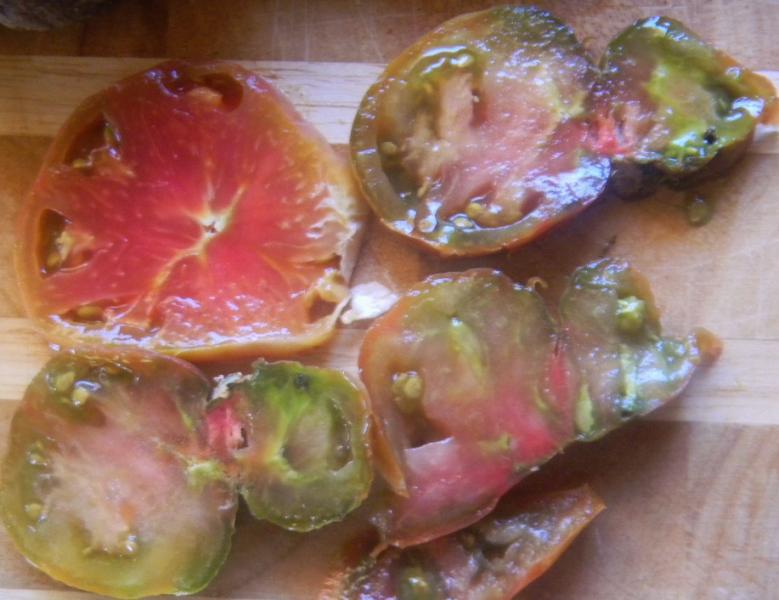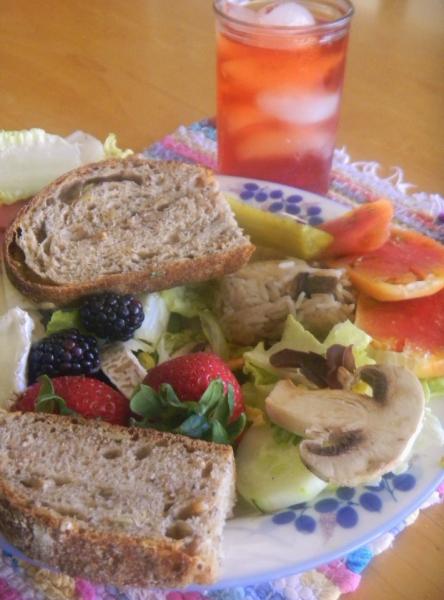We were inspired by Varda’s recent Priests Hat Altamura Style Bread Revisited here: http://www.thefreshloaf.com/node/28663/altamura-style-bread-revisited

and thought we would convert it to our new, nearly normal, 3 day, multi-grain with sprouts and seeds process – no nuts this time. We reduced the semolina and added some; rye, 6 grain cereal, white WW, AP and bread flour.

I suppose we like the way the dough was shaped the most and what drew us to this take onAltamurastyle bread. With our college age daughter home for the summer, she wanted to learn how to bake and cook so when she moves off into her apartment next year she won’t starve. So she learned some French slap and folds and regular S& Fs on this loaf. But didn’t make it out of bed early enough to do the unusual Altamura Priest’s Hat shaping.

The dough rose well during the 20 hour retard period in the refrigerator and, after coming to room temperature the next morning, it nearly folded itself into the hat shape. At about 2 ½ hours it was ready for the oven having passed the poke test.


The crust browned very nice and dark, the way we like it, the seeds and sprouts were popping out here and there. Best of all the crust was very tasty. The crumb was fairly open with all the whole grains, seeds, and sprouts but the taste and texture were just great. We really like how this bread tastes. The SD tang was deep and complex so the 3 day process worked. Can’t wait to taste it tomorrow. Formula and methods follow the lunch shot.

It took years of genetic engineering to get a home grown heirloom tomato color to match Green Rooibos, Honeybush, 4 Fruit Tea but even longer to get the same tonato to match the shape of Altamura 'Priest's Hat' Bread.




| Semolina, Rye and WW Bread With Sprouts, Sunflour and Chia Seeds | | | | | |
| | | | | | |
| SD Starter | Build 1 | Build 2 | Build 3 | Total | % |
| SD Starter | 20 | 0 | 0 | 20 | 3.48% |
| Rye | 10 | 10 | 0 | 20 | 4.44% |
| Semolina | 0 | 0 | 25 | 25 | 5.56% |
| WWW | 10 | 0 | 0 | 10 | 2.22% |
| AP | 15 | 15 | 20 | 50 | 11.11% |
| Water | 35 | 35 | 20 | 90 | 20.00% |
| Total | 90 | 70 | 65 | 225 | 50.00% |
| | | | | | |
| Starters | | % | | | |
| Flour | 125 | 27.78% | | | |
| Water | 100 | 22.22% | | | |
| Hydration | 80.00% | 0.00% | | | |
| Levain % of Total | | 19.98% | | | |
| | | | | | |
| Dough Flour | | % | | | |
| 6 Grain Cereal | 50 | 11.11% | | | |
| Semolina | 100 | 22.22% | | | |
| White WW | 50 | 11.11% | | | |
| Rye | 50 | 11.11% | | | |
| Bread Flour | 100 | 22.22% | | | |
| AP | 100 | 22.22% | | | |
| Dough Flour | 450 | 100.00% | | | |
| Salt | 9 | 2.00% | | | |
| Water | 332 | 73.78% | | | |
| Dough Hydration | 73.78% | | | | |
| | | | | | |
| Multigrain Sprouts | | % | | | |
| WW | 15 | 3.33% | | | |
| Rye | 15 | 3.33% | | | |
| Spelt | 15 | 3.33% | | | |
| Total Sprouts | 45 | 10.00% | | | |
| | | | | | |
| Add - Ins | | | | | |
| Sunflower Seeds | 45 | 10.00% | | | |
| Chia | 20 | 4.44% | | | |
| Total | 65 | 14.44% | | | |
| | | | | | |
| Total Flour | 575 | | | | |
| Total Water | 432 | | | | |
| T. Dough Hydrat. | 75.13% | | | | |
| | | | | | |
| Hydration w/ Adds | 75.13% | | | | |
| Total Weight | 1,126 | | | | |
Method
Start the sprouts by soaking the berries in water for 5 hours then spread them out on a damp paper towel, cover with another paper towel and then cover in plastic. Set aside to sprout until needed – about 1 ½ days.
Start the SD levain build by following the 3 builds 3 hours apart and then refrigerate overnight.
Start the autolyse by combining the flour and water in the mixing bowl, cover with plastic and refrigerate for 24 hours.
Remove the levain and autolyse from the fridge and allow them to come to room temperature - about 90 minutes.
Mix with a dough hook, the levain and the autolyse in the mixing bowl on KA 2 for 4 minutes add salt and continue kneading for an additional 2 minutes . Place in a well oiled bowl to rest for 15 minutes. Do a few minutes of French slap and folds and let rest for 15 minutes, then do 4 S&F on 15 minute intervals. Add the sprouts and seeds on the 3rd S&F and allow to rest for and ferment for 1-2 hours after the 4th. Form into a boule and refrigerate overnight.
Remove from refrigerator and allow dough to come to room temperature – about 90 minutes. Flatten gently into a 8 x 18 rectangle and form into a priests hat by folding in half from the short end and sealing the top edge. Then fold up from the short end again but only go ¾ of the way up sealing the top and sides. Allow to proof on parchment paper, on a peel, inside a trash bag until it passes the poke test about 90 minutes.
Preheat oven to 500 F with steaming method and stone in place for 45 minutes. Slide hat onto the stone and turn the oven temp down to 425 F after 4minutes. Allow to steam for another 12 minutes. Remove steam, turn down to oven to 425 convection this time, and allow bread to bake turning every 8 minutes, 120 degrees, until center reaches 205 F. Turn off oven and leave on stone for 10 more minutes, with the door ajar, too allow skin to crisp up. Move to wire rack to cool completely.